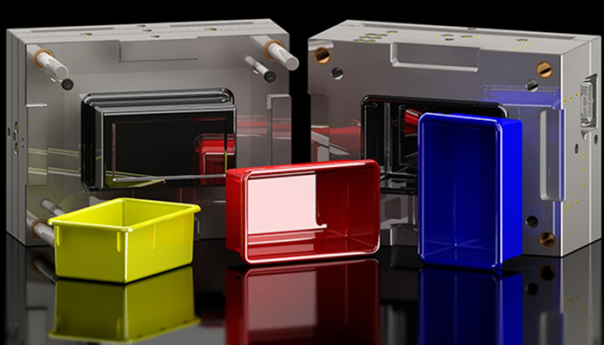Producing Large Molding Parts
In the world of manufacturing, producing large molding parts is a complex and intricate process. This article will explore the various steps involved in creating these parts, the challenges faced, and the importance of precision and expertise in achieving the desired results.
The first step in producing large molding parts is designing the mold. This involves creating a precise blueprint of the part, taking into account its dimensions, shape, and any specific requirements. Design engineers use specialized software to create these blueprints, ensuring accuracy and feasibility. The mold design needs to consider factors such as material flow, cooling, and ejection mechanisms to ensure a successful production process.
Once the mold design is finalized, the next step is to manufacture the mold. This involves using advanced machinery and techniques to shape and form the mold according to the blueprint. Depending on the complexity of the part, the mold may be made from a variety of materials, such as steel, aluminum, or composites. The mold must be structurally robust to withstand the pressures and forces exerted during the molding process.
With the mold ready, the next step is to prepare the molding material. Large molding parts can be made from a wide range of materials, including plastics, metals, and composites. Each material has its own unique properties and requirements. For example, plastics require heating and melting before injection into the mold, while metals may need to be melted and poured. The temperature, pressure, and time parameters must be carefully controlled to ensure the material flows smoothly and fills the mold cavity completely.
Once the molding material is prepared, it is injected into the mold cavity. This is typically done using a specialized machine called an injection molding machine. The machine applies high pressure to force the material into every nook and cranny of the mold, ensuring a precise and accurate replication of the part. The mold is then allowed to cool and solidify, a process known as curing.
After the part has solidified, it is carefully removed from the mold. This can be a challenging step, especially for large and complex parts. Ejection mechanisms, such as pins or ejector plates, are used to push the part out of the mold without causing any damage. Care must be taken to ensure the part is released smoothly and without any distortion or warping.
Once the part is out of the mold, it undergoes further processing and finishing. This may include trimming excess material, sanding, painting, or any other required operations to achieve the desired final product. Quality control measures are implemented at every stage to ensure the part meets the specified standards and requirements.

Producing large molding parts requires a high level of expertise, precision, and attention to detail. It involves a combination of engineering knowledge, technological advancements, and skilled craftsmanship. Any deviation from the design or error in the production process can result in defective parts or subpar quality. Therefore, it is crucial to work with experienced manufacturers who possess the necessary equipment, knowledge, and capabilities to produce large molding parts to the highest standards.
Producing large molding parts is a complex process that involves various steps and challenges. From designing the mold to molding the material and finishing the part, every stage requires meticulous planning and execution. Achieving the desired results requires expertise, precision, and attention to detail. By following these processes and working with experienced manufacturers, high-quality large molding parts can be produced efficiently and effectively.
Precedente:Exploring the Economics of Injection Moulding: Understanding the Cost Factors
Prossimo: Unleashing the Potential of Industrial Molds: A Game-Changer in Manufacturing
-
How are precision moulds made?
2024-12-3
In the vast field of manufacturing, precision moulds play a vital role. Not only are they key tools in the production of...
Visualizza dettagli -
Precision Medical Molding Parts for Critical Applications
2023-5-6
Precision medical molding parts play a critical role in the medical industry, where quality and reliability are paramoun...
Visualizza dettagli -
Producing Large Molding Parts: Learn about Chinese mold manufacturing
2023-5-11
Producing large molding parts requires a lot of expertise and careful planning. Molding is the process of creating a thr...
Visualizza dettagli -
Designing a High-Quality Plastic Beer Crate Mold for Optimum Manufacturing Efficiency
2023-6-19
Plastic beer crates are an essential item in the beverage industry. They are used to transport and store beer bottles, e...
Visualizza dettagli -
Gate Injection Molding: A Comprehensive Guide
2023-6-11
Gate injection molding is a popular manufacturing process used to produce plastic parts. It involves injecting molten pl...
Visualizza dettagli -
How Can Aerospace Manufacturers Achieve Excellence in Molding Parts for Aircraft and Spacecraft?
2023-8-20
Introduction: In today's highly competitive aerospace industry, achieving excellence in molding parts is crucial. Moldin...
Visualizza dettagli







